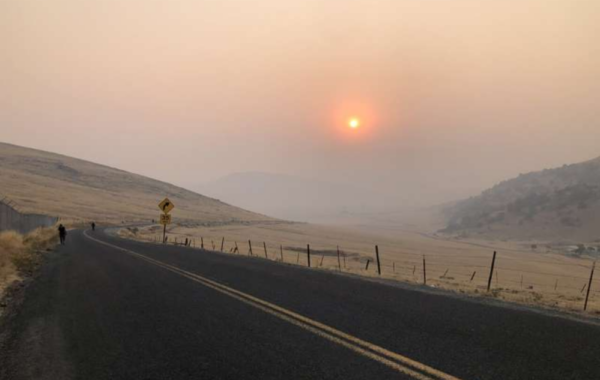Using a novel detection method, UC Riverside scientists identified a significant quantity of methane, a super-potent greenhouse gas, emanating from wildfires—a source not presently being accounted for by state air quality management.
The researchers claimed the state will struggle to meet its cleaner air and climate targets without accounting for methane, which heats the globe 86 times more than carbon dioxide over 20 years.
Wildfires release methane. According to the latest UCR study, methane from the top 20 fires in 2020 was more than seven times the average from wildfires in the preceding 19 years.
“Fires are getting bigger and more intense, and correspondingly, more emissions are coming from them,” said UCR environmental sciences professor and research co-author Francesca Hopkins. “2020 fires emitted 14% of the state’s methane budget if tracked.”

Wildfire methane is not tracked by the state. Wildfires were the third largest methane source in 2020.
These sources are hard to measure, and we may not control them. “We must try,” Hopkins remarked. “They’re offsetting what we’re trying to reduce.”
Scientists analyze aircraft-collected wildfire air samples to quantify emissions. This older approach is pricey and difficult to implement. Remote sensing, which catches an integrated plume from 2020’s Sequoia Lightning Fire Complex in the Sierra Nevadas, was employed by the UCR study team to assess emissions.
The primary author, UCR environmental sciences Ph.D. student Isis Frausto-Vicencio, used the approach, described in Atmospheric Chemistry and Physics, to safely quantify the Sequoia Lightning Fire Complex gas and debris plume from 40 miles away.
“The plume, or atmospheric column, is like a mixed signal of the whole fire, capturing the active as well as the smoldering phases,” Hopkins added. “That makes these measurements unique.”
This method uses sunlight instead of a laser. The plume’s gases absorb and release solar heat, revealing aerosol, carbon, and methane levels.

Using the remote approach, the researchers identified roughly 20 gigagrams of methane released by the Sequoia Lightning Fire Complex. One gigagram is 1,000 metric tons. Elephants weigh around one metric ton. The fire contained 20,000 elephants’ worth of gas.
This data fits European space agency satellite data, which shows the scorched zones more globally but cannot identify methane.
Wildfires would rank third in the California Air Resources Board methane budget, behind agriculture and industry, but ahead of residential and commercial structures, power production, and transportation. Climate warming will cause additional megafire years like 2020.
By 2030, the state aimed to cut methane, refrigerants, and other air pollutants by 40%. In 2016, Gov. Jerry Brown signed SB 1383, enacting those reduction objectives.
Regulations that collect methane from dairy farm manure, decrease food waste in landfills, force oil and gas producers to avoid leaks, restrict specific gases in new refrigerators and air conditioners, and other steps should reduce emissions.
“California has been way ahead on this issue,” Hopkins added. “Despite these fires, we’re hoping the state can limit methane emissions under our control to reduce short-term global warming and its worst effects.”

